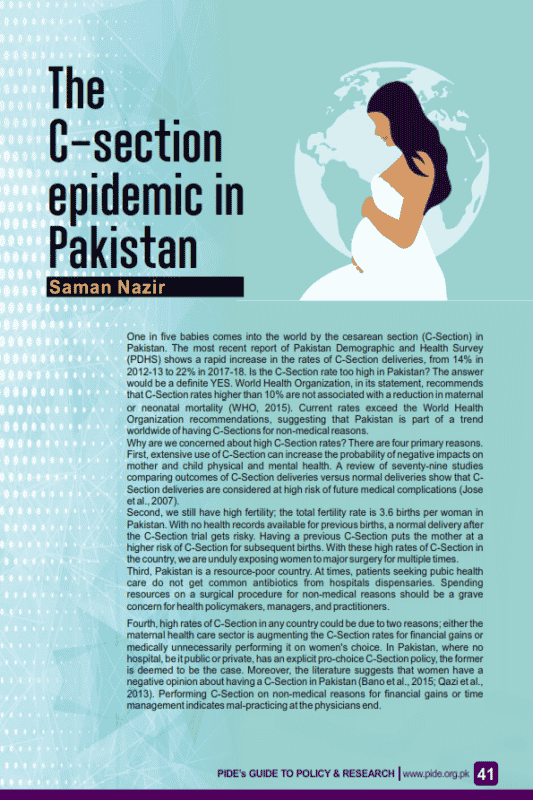
Pakistan Institute of Development Economics
- Home
Our Portals
MenuMenuMenuMenuMenuMenuMenu - ResearchMenuMenuMenuMenuMenuMenuMenu
- Discourse
- The PDR
- Our Researchers
- Academics
- Degree Verification
- Thesis Portal
- Our Portals
The C-section epidemic in Pakistan (P & R Vol.2 Issue 3)
One in five babies comes into the world by the cesarean section (C-Section) in Pakistan. The most recent report of Pakistan Demographic and Health Survey (PDHS) shows a rapid increase in the rates of C-Section deliveries, from 14% in 2012-13 to 22% in 2017-18. Is the C-Section rate too high in Pakistan? The answer would be a definite YES. World Health Organization, in its statement, recommends that C-Section rates higher than 10% are not associated with a reduction in maternal or neonatal mortality (WHO, 2015). Current rates exceed the World Health Organization recommendations, suggesting that Pakistan is part of a trend worldwide of having C-Sections for non-medical reasons. Why are we concerned about high C-Section rates? There are four primary reasons. First, extensive use of C-Section can increase the probability of negative impacts on mother and child physical and mental health. A review of seventy-nine studies comparing outcomes of C-Section deliveries versus normal deliveries show that CSection deliveries are considered at high risk of future medical complications (Jose et al., 2007). Second, we still have high fertility; the total fertility rate is 3.6 births per woman in Pakistan. With no health records available for previous births, a normal delivery after the C-Section trial gets risky. Having a previous C-Section puts the mother at a higher risk of C-Section for subsequent births. With these high rates of C-Section in the country, we are unduly exposing women to major surgery for multiple times. Third, Pakistan is a resource-poor country. At times, patients seeking pubic health care do not get common antibiotics from hospitals dispensaries. Spending resources on a surgical procedure for non-medical reasons should be a grave concern for health policymakers, managers, and practitioners.



